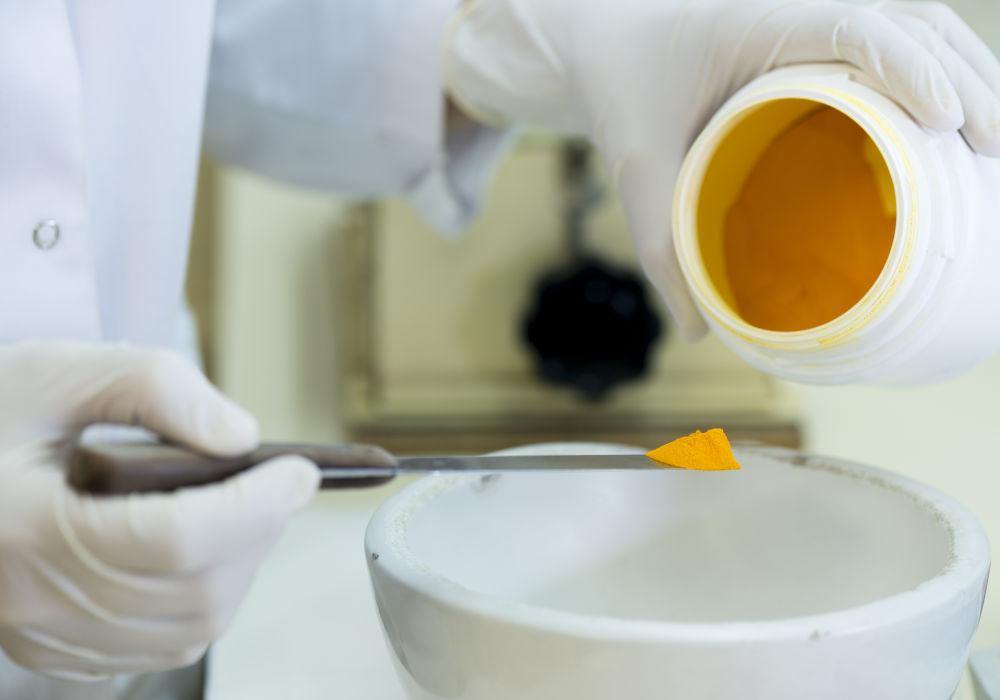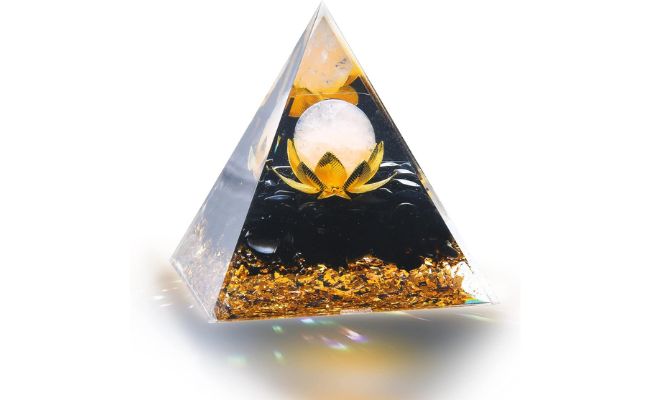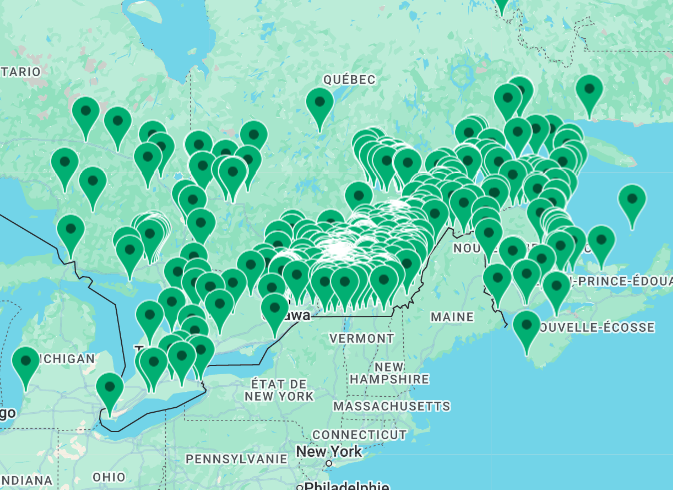Article: Our Research

Our Research
Why Do We Conduct Research?
Pure Hazelwood, inspired by the Native American tradition, has developed and commercialized necklaces and bracelets made of hazel wood for their alleged "benefits", to relieve many symptoms and discomforts for the whole family. Owners Genevieve and Patrick have collected many testimonials from satisfied customers, so much so that in 2009, they started a scientific research program aimed primarily at understanding their product, but also to obtain scientific evidence of its effectiveness on human health.
First Research Program: 2009-2011, Laval University
The owners of Pure Hazelwood met researchers at the Research Center on Wood at Laval University to launch their first scientific research program. The questions Genevieve and Patrick asked the researchers were « What are the components of the hazel wood used to make necklaces? What are the properties of the compounds found in the wood that could provide the first evidence of its therapeutic potential?;»
The research project was led by Dr. Mariana Royer, specialized in natural wood, who was a postdoctoral fellow in the laboratory of wood chemistry at Laval University at the time.
A- First, the Hypotheses
Before directing their laboratory work, researchers express starting hypotheses based on :
1- Traditional use
2- Current use of the product by the customers of Pure Hazelwood
3- Literature review
1- Traditional Use :
The first literature reviews helped collect data on the intensive traditional use of hazel wood Corylus cornuta, by Native Americans. These are the first indications of the therapeutic potential of this wood specie, specifically the branches and twigs.
According to the ethnopharmacological data, it is clear that the branches, twigs and bark of the hazel tree (Corylus cornuta) are the parts of the shrub which have been most widely used for their medicinal properties. This traditional use provides information to guide scientific hypotheses.
2- Current Use of the Product by the Customers of Pure Hazelwood
The researchers analyzed the archive of testimonials collected from the customers of Pure Hazelwood to gather information that could guide them in their lab work on hazel wood.
They noted that :
-According to current use by Pure Hazelwood customers, hazel wood is worn continuously in contact with the skin to start feeling the « effects of symptom relief » after a few hours or days (varying by testimonial).
-According to testimonials, the necklace or bracelet must be changed after a certain period of time because it seems to lose its alleged "therapeutic efficacy" and the symptoms then reappear.
According to data from scientific literature, many of the symptoms cited by customers wearing Pure Hazelwood necklaces or bracelets can be directly linked to oxidative stress and to inflammatory processes. Several studies have demonstrated the role of oxidative stress, and therefore oxygenated or nitrogenous reactive species (ROS / RNS), in the development of cardiovascular disease [5], [6], pulmonary disease [7], [8], gastric ulcers [9], [10], [11], skin diseases such as psoriasis [12], [13], eczema [14], acne [15] or arthritis [16], [17], [18].
In these conditions, the reactive species (free radicals) involved in inflammatory processes are responsible for the degeneration and chain reactions.
3- Literature Review on the Species CCorylus cornuta, its Chemical Composition and its Properties
When researchers began their investigation on the Corylus cornuta species in scientific databases, they realized that very few phytochemical or pharmacological studies existed on Corylus cornuta This species that sees widespread traditional use is therefore poorly known by scientists.
An exhaustive review of the literature shows that only the authors McCune and Johns [19-21] sstudied Corylus cornuta extracts in a comprehensive study of 35 medicinal plants of the boreal forest used by the indigenous peoples of eastern Canada to treat many symptoms of diabetes. They demonstrated the strong antioxidant and antiradical capacities of du Corylus cornutabranches and bark extracts, particularly their ability to scavenge superoxide and peroxyl radicals involved in oxidative stress and inflammatory processes. These authors have also shown that Corylus cornuta extracts had the highest antiradical activity among other plants. Corylus cornuta was chosen for this study because traditionally, the authors noted that it was used to treat symptoms such as diarrhea, chest pain (cardiac disorders) and sore eyes.
B- Then, Objectives
The researchers were then able to identify research objectives. Their research undertaken at Laval University from 2009 to 2011 had the following objectives:
1- Establish the chemical composition of polyphenols in Corylus cornuta utwigs used to make Pure Hazelwood jewelry.
N.B.: Polyphenols are known for their many biological properties, their antioxidant and anti-inflammatory properties in particular [22-25]. These compounds have been therefore been targeted in order to choose extraction methods.
2- Perform a wide screening of the bioactivity of various extracts obtained from twigs used to make necklaces/bracelets: measurement of antioxidant, anti-radical, antibacterial, antifungal and anti-enzymatic (skin aging, diabetes) activities.
Note: The activities are measured in vitro only on seven different extracts. in vitro uniquement.
3- Identifying the optimal extraction method of the bioactive compounds: polyphenols.-
4- Evaluate the preliminary anti-inflammatory potential and the toxicity of the bioactive hazel twig extracts on skin cells..
5- Perform the first variability tests on raw material (harvest season, color, size, etc...) in order to standardize the fabrication methods of Pure Hazelwood products.
The results obtained at Laval University gave Pure Hazelwood a lot information on the properties of extractives s ound in the hazel twigs used to make necklaces and bracelets. This did not only highlight the true potential of hazel wood, but also opened new paths for the company’s development that were never considered before these studies, the breadth of possibilities for the application of dthe extracts that can be obtained from the production residues of the necklaces/bracelets, with a view on eco-valorization.
C- Finally, the FIRST Results
The results of this first basic research program have been partially published [26] and helped showcase :
- The polyphenol-rich extracts of hazel twigs.
- The strong antioxidant/antiradical activity in polyphenols derived from different extraction methods.
- The strong activity against enzymes responsible for skin aging.
- The extract’s active ingredient antimicrobial potential.
- The identification of several compounds of interest in the most bioactive hazel wood extract, including lsalicylic acid*, a molecule from which Aspirin® was synthesized.
* Salicylic acid is known for its anti-inflammatory and analgesic properties. However, the results of the analysis of the complex chemical composition of the bioactive extract of hazel twigs suggest that salicylic acid present in the twigs is not the only compound responsible for the antioxidant and anti-inflammatory activities observed. This twig extract is rich in various compounds that act in synergy.
These results have therefore highlighted the presence of bioactive extractive compounds in hazel twigs used to make Pure Hazelwood products but gave no indication on the mechanism of action of the necklaces and bracelets. However, they opened a door for Pure Hazelwood to develop new products from hazel wood extracts, rich in bioactive antioxidants and anti-inflammatory compounds.
D- Research Continues: Pure Hazelwood in Biotechnology
These results have encouraged Pure Hazelwood to continue investing in research and to create, in 2011, its own R&DD department led by Dr. Mariana Royer. Since then, the Pure Hazelwood research program is partially funded by government agencies and the company continues to work also with external experts in the field of natural products from multiple platforms developed by College Centres for the Transfer of Technology (CCTT) such as TransBiotech, Levis, Quebec and private research institutions.
Pure Hazelwood R&D aims:
1) To understand and scientifically explain the transfer of the properties of hazel twigs used to make necklaces and bracelets through the skin and to improve the efficiency of its products by mastering the characteristics and variability of the raw material.
2) To grow by developing new high quality products based on the bioactive extract obtained from the hazel twig residue collected after the production of necklaces.
In February 2013, Pure Hazelwood was nominated as finalist in the Innovation in Green Chemistry Contest organized by the Centre Québécois de Valorisation des Biotechnologies.
SOURCES
[1] Arnason T, Hebda RJ, Johns T. Use of plants for food and medicine by Native Peoples of eastern Canada. Can J Bot. 1981;59:2189-325.
[2] Moerman D, editor. Medicinal Plants of Native America: University of Michigan Museum of Anthropology; 1986.
[3] Erichsen-Brown C. Medicinal and other uses of North American plants : a historical survey with special reference to the eastern Indian tribes. New York: Dover Publications; 1989.
[4] Smith HH. POTAWATOMI MEDICINES.
[5] Huang C-H, Chen H-W, Tsai M-S, Hsu C-Y, Peng R-H, Wang T-D, et al. Antiapoptotic Cardioprotective Effect of Hypothermia Treatment Against Oxidative Stress Injuries. Acad Emerg Med. 2009;16(9):872-80.
[6] Lee Y, Gustafsson AB. Role of apoptosis in cardiovascular disease. Apoptosis. 2009;14(4):536-48.
[7] Martinez-Cayuela M. Oxygen free radicals and human disease. Biochimie. 1995;77(3):147-61.
[8] Menzel DB. Antioxidant Vitamins and Prevention of Lung Disease. Ann N Y Acad Sci. 1992;669(1):141-55.
[9] Das D, Bandyopadhyay D, Bhattacharjee M, Banerjee RK. Hydroxyl Radical is the Major Causative Factor in Stress-Induced Gastric Ulceration. Free Radic Biol Med. 1997;23(1):8-18.
[10] Das D, Bandyopadhyay D, Banerjee RK. Oxidative Inactivation of Gastric Peroxidase by Site-Specific Generation of Hydroxyl Radical and Its Role in Stress-Induced Gastric Ulceration. Free Radic Biol Med. 1998;24(3):460-9.
[11] Oh T-Y, Lee J-S, Ahn B-O, Cho H, Kim W-B, Kim Y-B, et al. Oxidative damages are critical in pathogenesis of reflux esophagitis: implication of antioxidants in its treatment. Free Radic Biol Med. 2001;30(8):905-15.
[12] García-Pérez M-E, Royer M, Duque-Fernandez A, Diouf PN, Stevanovic T, Pouliot R. Antioxidant, toxicological and antiproliferative properties of Canadian polyphenolic extracts on normal and psoriatic keratinocytes. J Ethnopharmacol. 2010;132(1):251-8.
[13] García-Pérez ME, Royer M, Herbette G, Desjardins Y, Pouliot R, Stevanovic T. Picea mariana bark: a new source of trans-resveratrol and other bioactive polyphenols. Food Chemistry. 2012;135(3):1173-82.
[14] Maccarrone M, Catani MV, Iraci S, Melino G, Agrò AF. A survey of reactive oxygen species and their role in dermatology. J Eur Acad Dermatol Venereol. 1997;8(3):185-202.
[15] Akamatsu H, Horio T. The Possible Role of Reactive Oxygen Species Generated by Neutrophils in Mediating Acne Inflammation. Dermatol Nurs. 1998;196:82-5.
[16] Schiller J, Fuchs B, Arnhold J, Arnold K. Contribution of Reactive Oxygen Species to Cartilage Degradation in Rheumatic Diseases: Molecular Pathways, Diagnosis and Potential Therapeutic Strategies. Curr Med Chem. 2003;10(20):2123-45.
[17] Cuzzocrea S. Role of Nitric Oxide and Reactive Oxygen Species in Arthritis. Curr Pharm Des. 2006;12(27):3551-70.
[18] Afonso Vr, Champy R, Mitrovic D, Collin P, Lomri A. Radicaux libres dérivés de l'oxygène et superoxydes dismutases dans les maladies rhumatismales. Revue du Rhumatisme. 2007;74(7):636-43.
[19] McCune, L. M., & Johns, T. (2002). Antioxidant activity in medicinal plants associated with the symptoms of diabetes mellitus used by the Indigenous Peoples of the North American boreal forest. Journal of Ethnopharmacology, 82(2-3), 197-205.
[20] McCune, L. M., & Johns, T. (2003). Symptom-Specific Antioxidant activity of Boreal Diabetes Treatments. Pharmaceutical Biology, 41(5), 362.
[21] Mc Cune, L. M., & Johns, T. (2007). Antioxydant activity relates to plant part, life form and growing condition in some diabetes remedies. Journal of Ethnopharmacology, 112, 461-469.
[22] Devaraj S, Vega-López S, Kaul N, Schönlau F, Rohdewald P, Jialal I. Supplementation with a pine bark extract rich in polyphenols increases plasma antioxidant capacity and alters the plasma lipoprotein profile. Lipids. 2002;37(10): 931-4.
[23] Nichols J, Katiyar S. Skin photoprotection by natural polyphenols: anti-inflammatory, antioxidant and DNA repair mechanisms. Arch Dermatol Res. 2010;302(2):71-83.
[24] Queen BL, Tollefsbol TO. Polyphenols and aging. Current Aging Science. 2010;3(1):34-42.
[25] Scalbert A, Manach C, Morand C, Rémésy C, Jiménez L. Dietary polyphenols and the prevention of diseases. Crit Rev Food Sci Nutr. 2005;45:287-306.
[26] Royer M, Stevanovic T. Study of Corylus cornuta Twig Extracts: Antioxidant, Radical Scavenging, Anti-Enzymatic Activities and Cytotoxicity Biotechnology for Wellness Industries. 2012;1(1):67-84.http://www.lifescienceglobal.com/pms/index.php/ijbwi/article/view/32




